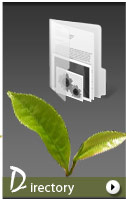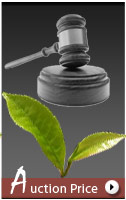 Tea Tasting Tea Tasting
It is the taster who describes and values tea. His description of the liquor is based on taste. In its widest sense, which includes aroma, taste is a very complex property that has so far not been assessed chemically. A tater may deal with several hundred tea samples in a day. In making his evaluation, he brings his knowledge and experience of the outturn of a particular estate to bear upon his conclusions
 Principles of Tasting Principles of Tasting
Tea tasting has its own distinct routines. The taster takes the tea into his mouth with a loud sucking noise. He swirls the liquor round his tongue and gums, drawing the aroma back into his mouth and up into the olfactory nerves. The tater, thereby, tastes feels and smells the liquid.
While it is mainly the tongue that experiences taste, other surfaces of the mouth also play a role here. There are four kinds of tastes salt, sour, sweet and bitter. Sweetness is tasted at the tip of the tongue, and bitterness at the back. Saltines too are tasted at the tip, but also at the sides of the front of the tongue. Sourness is experienced at the back edges. A stringency or pungency is a sensation, not a taste that is felt on the gums and part of the cheek. When the liquor is swirled round the mouth, the thickness, body or viscosity is felt and judged.
Tea tasting is a precise skill and one that can be performed only with a good natural palate and active olfactory nerve. Apart from tasting and describing tea, the ability to value a tea calls for long experience and knowledge.
 The Taster’s Infusion The Taster’s Infusion
The taster’s infusion is made of 6 grams of tea. The tea is placed in a mug fitted with a lid. Boiling water is poured onto the leaves, the lid is replaced and the infusion is allowed to stand for five minutes. The tea is then decanted into a handle-less cup of somewhat bigger capacity than the mug. The infused leaf is shaken from the mug on to the inverted lid, which I placed on top of the mug.
For tasters, “infused” leaf refers to the wet leaf left over after the liquor is drained out; “infusion” refers to the liquor.
A number of mugs are set up at a time. When the taster steps up to a table with a number of such mugs, set behind each will be set a sample of the dry tea leaf too.
|











